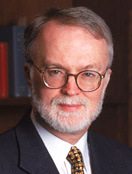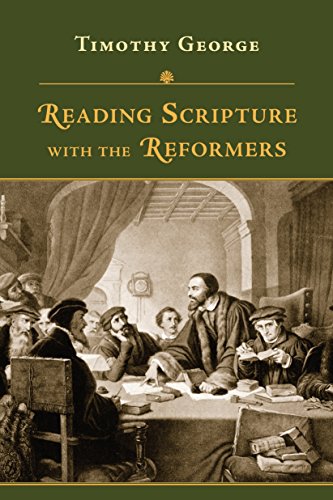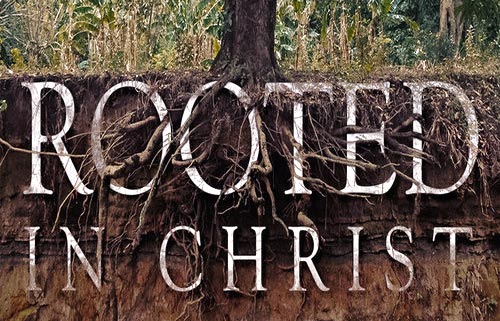Rediscovering
the Vitality
of Christian Roots through
500 Years of
Reformation
Spirituality
This year, 2017, presents a unique
opportunity for Christians to participate in
an Ecumenical Commemoration of the 500th
Anniversary of the beginning of the
Reformation. A number of Churches are holding
ecumenical services for common prayer for
renewal and reconciliation and a common
witness to the Gospel of Jesus Christ who is
the center of their common faith, and a
commitment to continue the journey to unity.
This
issue (February/March) and the next
one (April/May) will present some
of the distinguishing
features of reformation spirituality and the
growth of renewal movements over the
course of the past five centuries.
Five
key themes:
- Being
rooted and nourished in the Word of God
(centrality of Scripture in reformation
spirituality)
- Increasing
in faith and abounding in the grace of
Jesus Christ (biblical rediscovery
of the gift of God)
- Excelling in
Love and Holiness (holiness movement
and impact of Wesley, and others)
- Being
Filled with the Gifts and Power of the
Holy Spirit (20th century pentecostal
movement, charismatic renewal movement,
and covenant communities movement)
- Striving
for Unity in Common Witness of the
Gospel, Sharing Common Life and Mission
Together as Brothers and Sisters in
Christ (ecumenical movement and
Sword of the Spirit network of ecumenical
communities)
Links to articles on
Reformation Spirituality and Commemoration of
500th Anniversary
From the
February / March 2017 Issue
of Living Bulwark:
An
Introduction to the Age of
the Reformation,
by Timothy George
Roots
that Refresh: The
Vitality of Reformation
Spirituality, by
Alister McGrath
Reading
Scripture with
the Early
Reformers
Your
Word is Truth: Statement
of Evangelicals and
Catholics Together
From the April /
May 2017 Issue of Living
Bulwark:
A
Spiritual
Orientation to
500th
Reformation
Anniversary, by Raniero Cantalemessa
Justification:
A Summary of
Lutheran-Catholic
Dialogue and
Joint
Agreement
Faith
is not Opposed
to Love: A
Clarification
on By Faith
Alone by
Benedict XVI
Evangelicals
and Catholics
Together:
Joint
Statement on
the Gift of
Salvation
An
Introduction
to the Age
of the
Reformation:
A Time
of Transition
and Revolutionary
Change
.
by
Dr. Timothy
George
A
"new
world" in the
making
The age
of the Reformation was a time of transition,
vitality and change that gave us the
compass, the printing press, the telescope,
gunpowder, the first map of the New World,
the revival of the visual arts and letters
(Michelangelo and Shakespeare), widespread
inflation, the rise of the modern
nation-state, wars of religion - and a word
to describe all of this, revolution, from
Nikolaus Copernicus's famous work, De
revolutionibus orbium coelestium
(1543).
A
return to Scripture and the historic
faith of the early church
The Protestant
Reformation was a revolution in the original
scientific sense of that word: the return of
a body in orbit to its original position. It
was never the desire of Luther to start a
new church from scratch. He and the other
reformers who followed in his tracks wanted
to re-form the one, holy, catholic and
apostolic church on the basis of the Word of
God and to do so by returning to the
historic faith of the early church as they
found it set forth in the pure teachings of
the Scriptures.
A
revolution in religious life
This
led to a fundamental reorientation in
Christian theology. Luther's rediscovery of
justification by faith alone, Zwingli's
insistence on the clarity and certainty of
the Bible, Calvin's emphasis on the glory
and sovereignty of God and the Anabaptist
quest for a true visible church all found
expression in numerous new confessions,
catechisms, commentaries, liturgies, hymns,
martyrologies and church orders.
Like a great earthquake that continues to
generate seismic aftereffects long after the
first shock is over, the Reformation set in
motion a revolution in religious life the
effects of which are still being felt half a
millennium later.
 Excerpted
from Reading
Scripture with the Reformers,
by (c) Timothy
George, 2011. Excerpted
from Reading
Scripture with the Reformers,
by (c) Timothy
George, 2011.
Dr. Timothy George (Th.D., Harvard University)
is a renowned Reformation historian and author
of Theology of the Reformers, as well as many
other theological and historical works. He is
the founding dean of Beeson Divinity School at
Samford University in Birmingham, Alabama,
USA. He is a member of the advisory council
for First Things. He is the general
editor of the Reformation Commentary on
Scripture series from InterVarsity
Academic.

Author, professor, and
well-known Reformation church
historian, Timothy George, has
provided the church with an
excellent introduction to
Reformation - era principles of
biblical interpretation,
preaching, and commentary
writing... George's volume is
especially helpful in analyzing
the way in which the Reformers
read and interpreted Scripture and
why their approach is of
continuing benefit to the
spiritual life of the contemporary
church."
- review by
James M. Garretson
|
Reading
Scripture with the Reformers
by
Dr. Timothy George
published
by InterVarsity Press, 2011
227 pages
G.R. Elton, an esteemed historian of
an earlier generation, once wrote
that "if there is a single thread
running through the whole story of
the Reformation, it is the explosive
and renovating and often
disintegrating effect of the
Bible."'
This book is the story, or at least
part of the story, of how the Bible
came to have a central role in the
sixteenth-century movement for
religious reform that we call the
Protestant Reformation.
There had been many Bible-based
reform movements throughout the
history of the church, beginning
with monasticism, in which the
Scriptures had a prominent place in
the daily liturgy of the hours.
Closer to the Reformation, the Bible
had also been championed by late
medieval movements of dissent-the
Lollards in England, the Hussites in
Bohemia and the Waldensians
spreading from the Italian Alps to
every corner of Europe. There were
the Brothers and Sisters of the
Common Life who copied, read and
taught the Bible in their many
communities throughout Germany and
the Low Countries. The old myth that
there was complete ignorance of the
Bible between the death of Augustine
and the birth of Luther has long
been exploded.
- quote from the Preface
|
|

